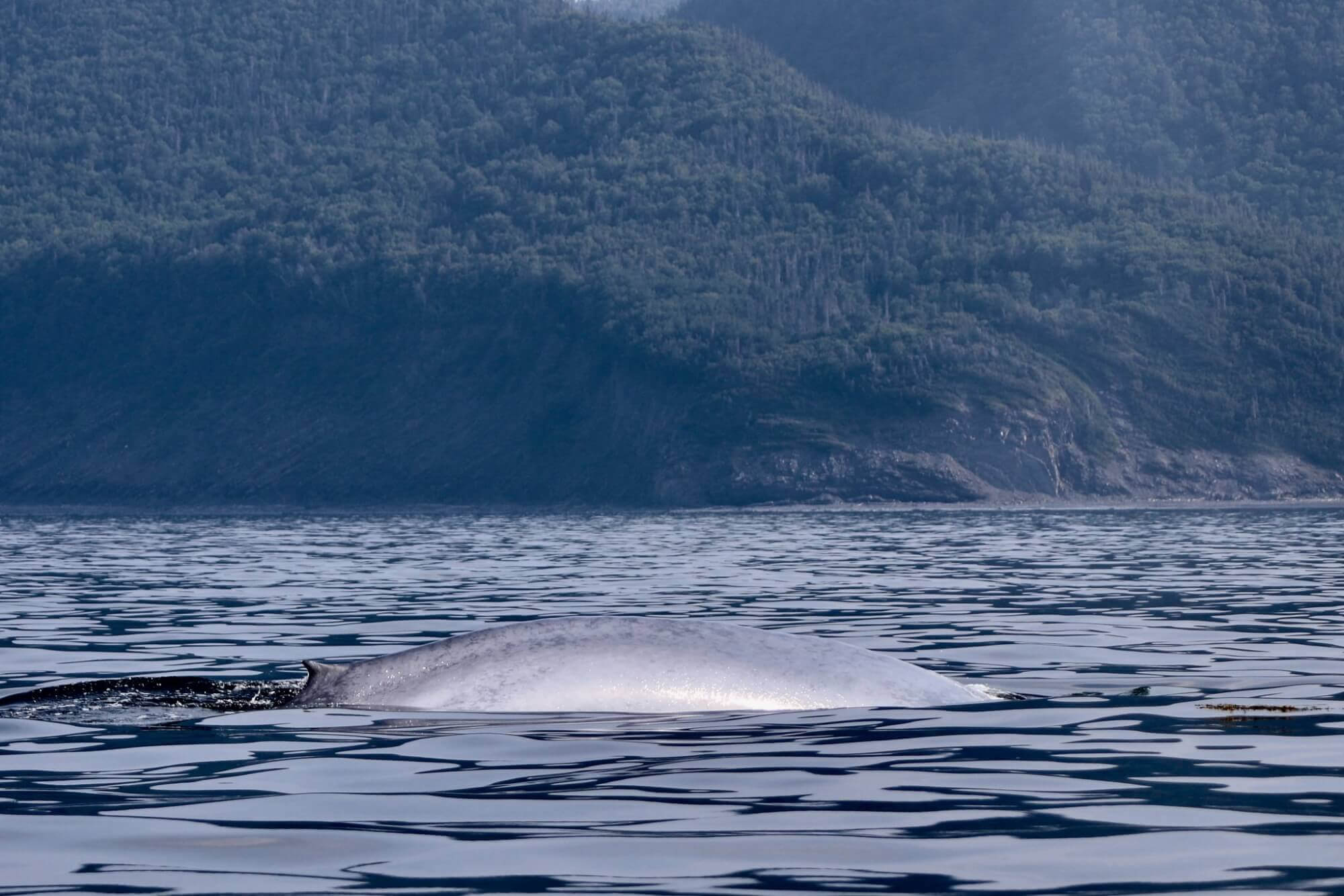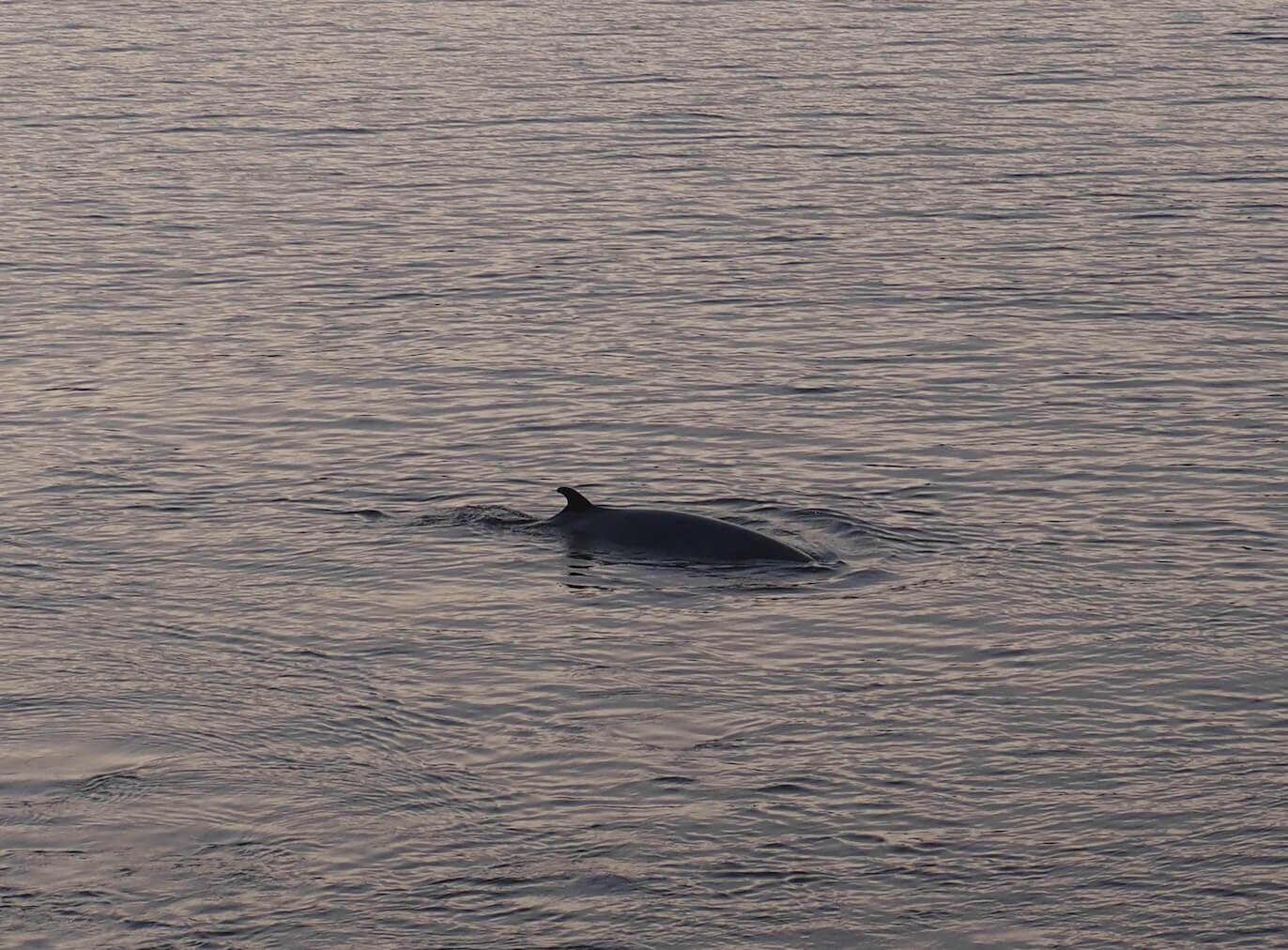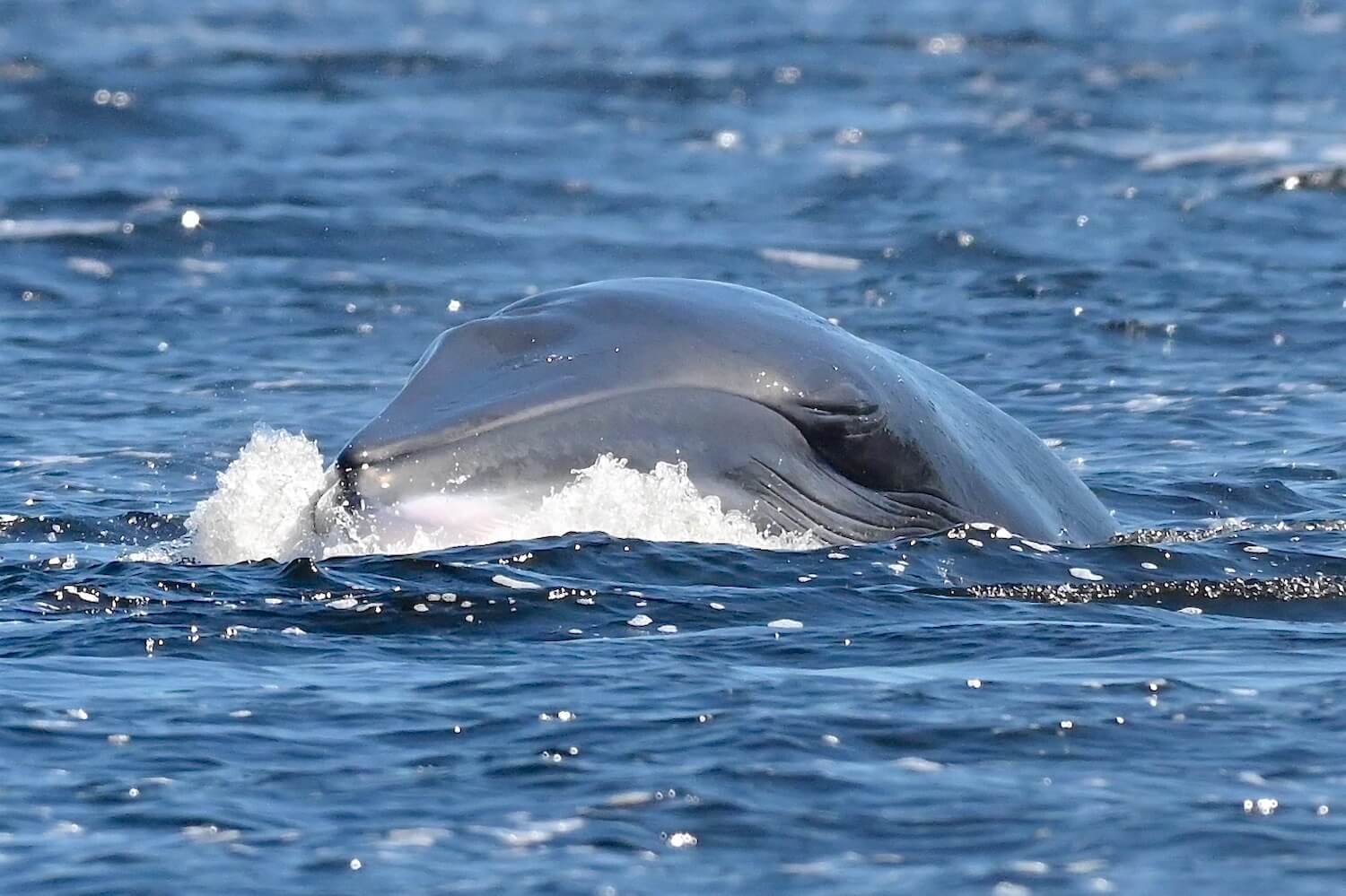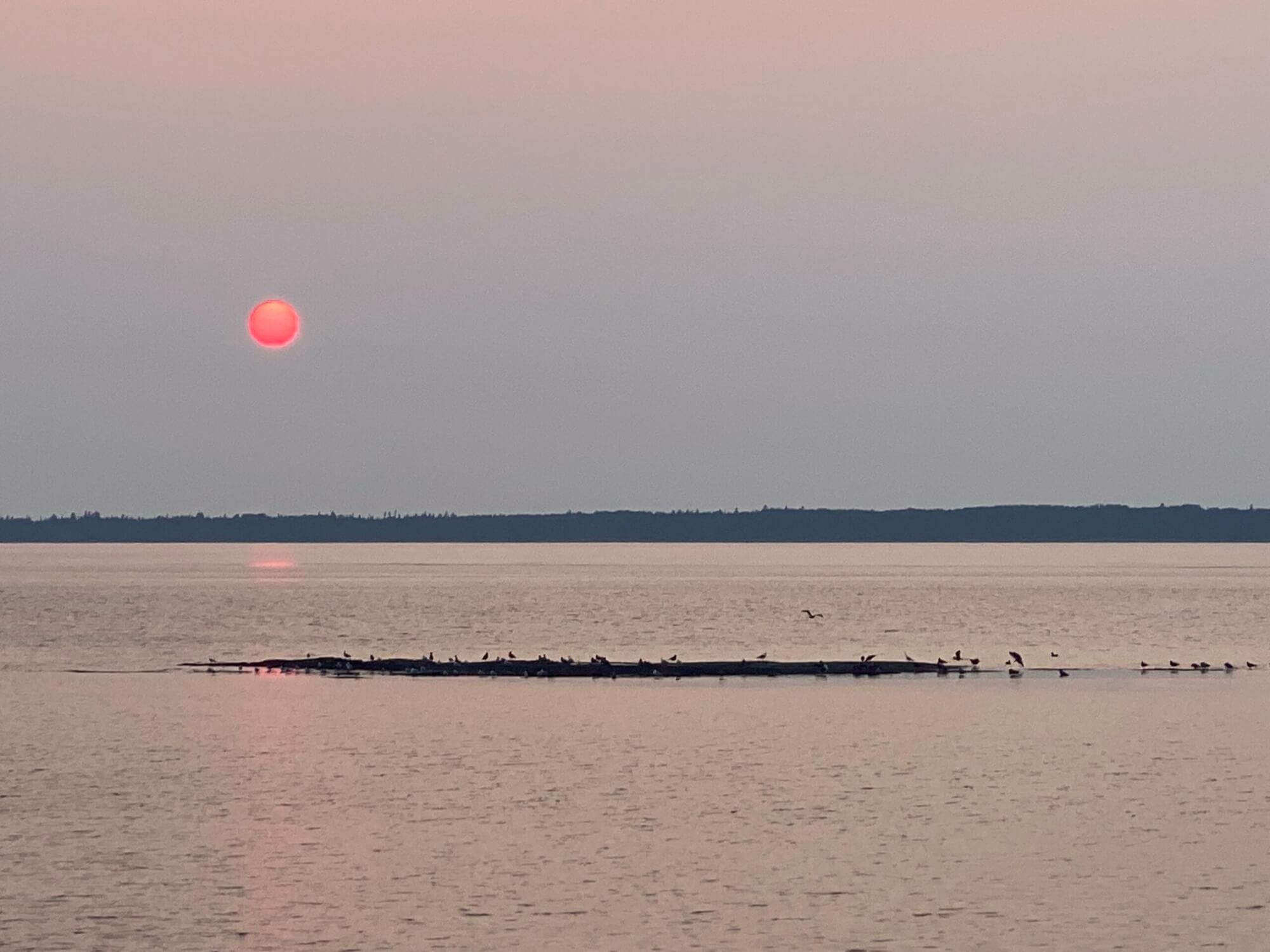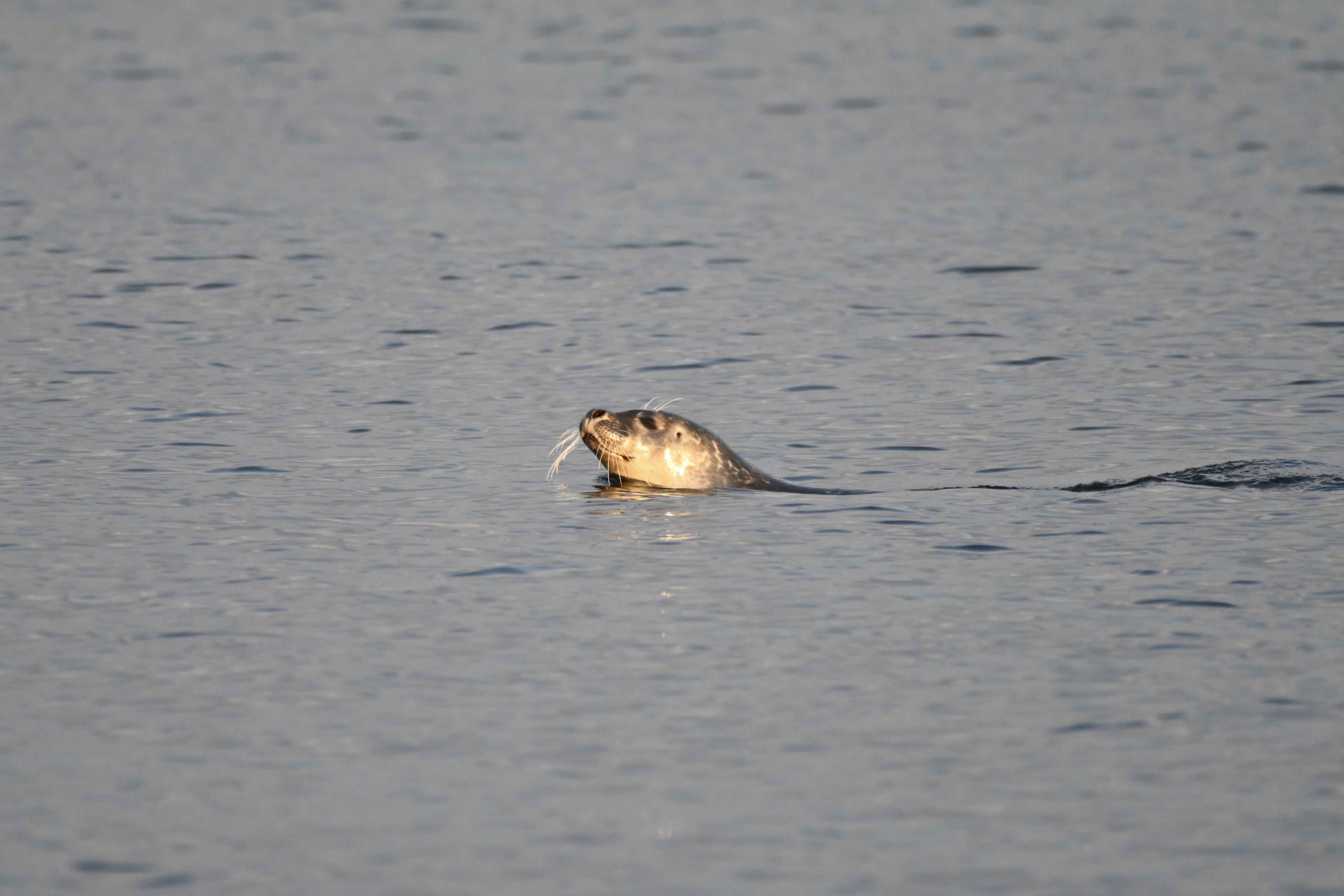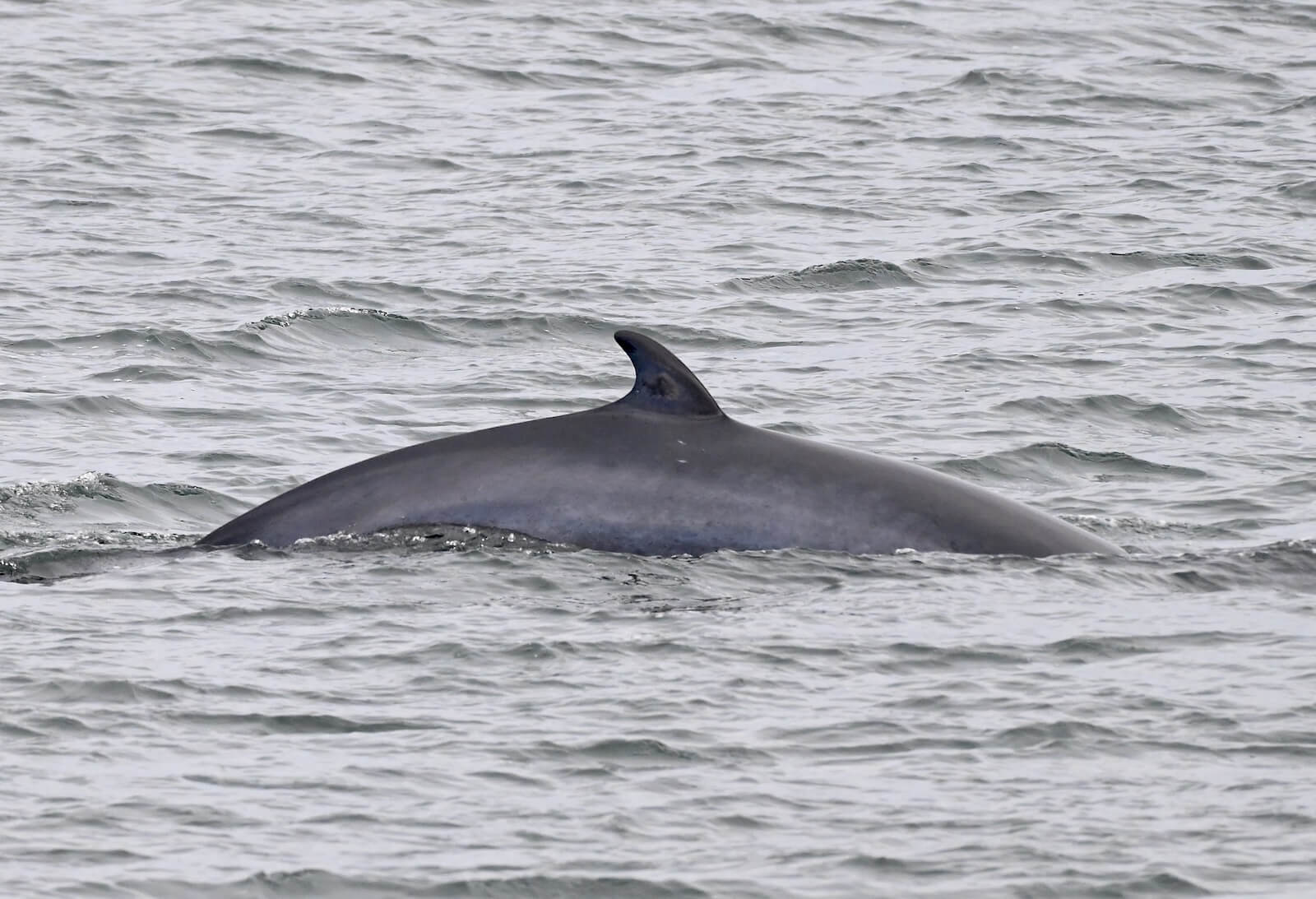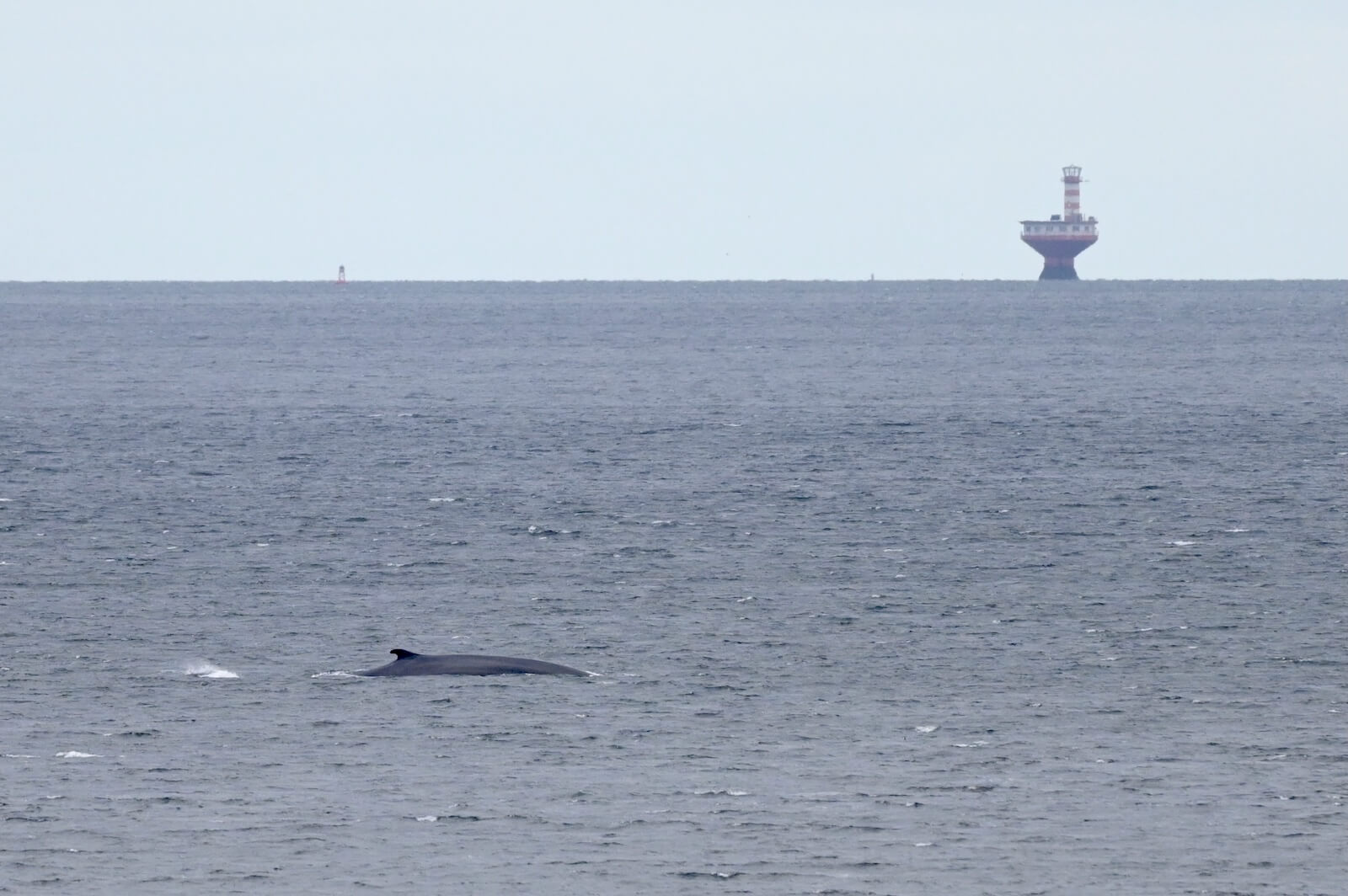It’s been an action-packed week! A beaked whale made a rare but disturbing visit off the coast of Les Bergeronnes. Blue whales are another highlight with the arrival of B246 (a.k.a. “Jaw-Breaker”), plus four individuals in the estuary and a sighting of three individuals in the gulf, not to mention the discreet detour of this giant to Gaspé Bay. These waters have been mostly occupied by two humpback whales, while the Saguenay–St. Lawrence Marine Park has been hosting two fin whales and two humpbacks. Seals, belugas, and minke whales round out this summer scene.
Good neighbours and a new arrival
A Saint-Irénée resident shared with us that she observed two or three belugas over the past week. But certainly not as many as her neighbour, who enjoys a much better view! “She has been seeing seven or eight every day,” she explains. In the summer, belugas are common in these parts. They can be seen as far upstream as Île-aux-Coudres.
The arrival of the female Jaw-Breaker in the estuary is cause for celebration. In 2022, this immense whale was seen with a calf, a rare sighting in the St. Lawrence. The calf was nicknamed “Nut-Cracker” by the Mingan Island Cetacean Study (MICS). At the Marine Environment Discovery Centre, one enthusiast was lucky enough to spot Jaw-Breaker: “A grey seal poking its big nose out of the water, a minke whale stealthily gliding past the rocks and, offshore, through the waves, we could make out a large spout that I later learned was the beautiful Jaw-Breaker!”
On the ferry to Rimouski, one passenger had the opportunity to admire a few marine mammals: “Large spouts in the distance near Îlets Boisés last Saturday at 7:00 in the morning, as well as a minke whale offshore near Les Escoumins. There was also a seal on a rock in Rimouski that must have been using both the Sun and the wind to dry off.” A hiker from Sept-Îles also saw a few pinnipeds. “Yesterday at around noon, I observed several seals basking on the rocks at low tide in Sept-Îles Bay. I was able to tally at least 25, all of which looked to be harbour seals.” On land, harbour seals often adopt a diagnostic “banana” position in which their heads and hind flippers are curved upwards.
Unidentified whales
On the other side of the river, we’ve received word of the presence of large, unidentified whales. In Baie-des-Sables, a group of four or five individuals was feeding offshore for over two hours. The spouts were high, but it was difficult to determine the species given how far out they were. Near Les Méchins, there was a report of a sighting of six large whales. A few tips can sometimes help us identify the whale species we’re looking at, but it’s not always so straightforward!
“I encountered and documented three blue whales and another herd of about a dozen belugas between Cap Gaspé and Cloridorme,” writes in one MICS collaborator. Since coastal conditions are not always favourable, offshore trips are more challenging to plan in this area.
In Gaspé Bay, a naturalist identified two humpback whales as well as a visiting blue whale. “The fin whales have been playing hide-and-seek,” she says, “sometimes present, sometimes farther offshore. We’ve been eagerly awaiting dolphins because porpoises and minke whales have been so scarce. And we can always count on the seals, whose pups are growing quickly. However, it’s still been a very good season whale-wise!” Last year, white-sided dolphins visited the estuary in November!
An exceptional but concerning visit: A northern bottlenose whale in the estuary
A northern bottlenose whale was observed on August 1 in Baie de Bon-Désir. Although this species is rare in the St. Lawrence Estuary, the sighting sparks concern: Specialists consulted by the Quebec Marine Mammal Emergency Response Network (QMMERN) report that the animal is emaciated and shows skin lesions, suggesting its health is frail. The northern bottlenose whale is endangered. In recent years, several individuals have washed up on the shores of the St. Lawrence.
Due to the whale’s precarious status, the situation is closely monitored by veterinary teams in collaboration with the Marine Park and the QMMERN. If you happen to spot a beaked whale (dead or alive), keep your distance and promptly contact the QMMERN at 1-877-722-5346.
Northern bottlenose whales are champion divers! They can dive to depths of over 1,000 metres and remain there for over 45 minutes, searching for prey in the abyss such as squid. In Canadian waters, a small population resides permanently in the Sable Island Gully off the coast of Nova Scotia. Beaked whales are pelagic, meaning they generally live far offshore. They constitute a their own distinct family of cetaceans: Ziphiidae.
Where are the whales this week? Sightings map
These data were reported by our network of observers. They give an idea of the presence of whales and in no way represent the actual distribution of whales in the St. Lawrence. Just for fun!
Click on the whale or seal icons to discover the species, the number of individuals, additional information or photos of the sighting. To enlarge the map, click on the icon in the top right-hand corner. The map works well on Chrome and Firefox, but not so well on Safari.
To display the list of sightings, click on the icon in the top left-hand corner.
Thanks to all our collaborators!
Special thanks go out to all our observers who share their love for marine mammals with us! Your encounters with cetaceans and pinnipeds are always a pleasure to read and discover.
On the water or from shore, it is your eyes that give life to this column.
Odélie Brouillette
Lisa Belkin
Marie-Andrée Charlebois
Guylaine Côté
Marcel Cousineau
Thalia Cohen-Bacry
Laetitia Desbordes
Nancy Marceau
Marie-Michelle Emond
Pascal Pitre
Renaud Pintiaux
Diane Ostiguy
René Roy
Christine Stadelmann
Guy Synnott
Laurence Tremblay
Marielle Vanasse
And all those we left out!
Additionally, we would like to acknowledge the following teams that also share their sightings:
Sept-Îles Research and Education Centre (CERSI)
Group for Research and Education on Marine Mammals (GREMM)
Marine Mammal Observation Network (MMON)
Quebec Marine Mammal Emergency Response Network (QMMERN)
Mingan Island Cetacean Study (MICS)
Mériscope
Would you also like to share your observations?
Have you seen any marine mammals in the St. Lawrence? Whether it’s a spout offshore or just a couple of seals, drop us a line and send your photos to [email protected]!


